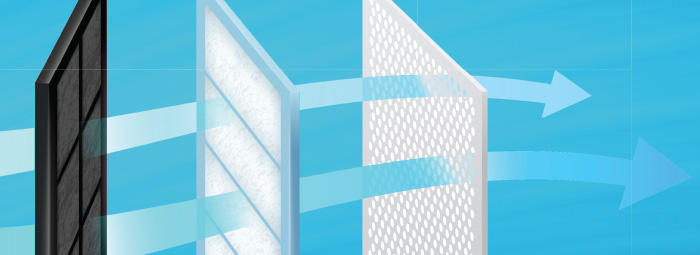
©2021 This excerpt taken from the article of the same name which appeared in ASHRAE Journal, vol. 63, no. 8, August 2021.
About the Author
Jonathan Burkett, P.E., is a mechanical engineer at Buford Goff & Associates in Columbia, S.C.
This peer-reviewed article does not represent official ASHRAE guidance. For more information on ASHRAE resources on COVID-19, visit ashrae.org/COVID19.
Parts 1 and 2 of this article in the March and April 2021 issues of ASHRAE Journal focused on viral infection, transmission and propagation in a space. Part 3 will focus on popular virus mitigation strategies and their application to single zone HVAC systems.
Ventilation (Dilution)
The need for ventilation for good indoor air quality in buildings has been recognized throughout history. Natural ventilation has been used for centuries to ventilate smoke, dust and odors. During the Crimean and U.S. Civil War, physicians observed that wounded soldiers fared better when they were housed in tents or barns (allowing greater ventilation) rather than crowded hospitals with poor ventilation. ASHRAE Standard 62.1-2019 defines ventilation air as “that portion of supply air that is outdoor air plus any recirculated air that has been treated for the purpose of maintaining acceptable IAQ.” The Wells-Riley equation (see Part 1) shows that by increasing the ventilation air rate, the infection risk can be reduced significantly.
The equation of ventilation shows the basic relationship between ventilation rate and concentration. Like the Wells-Riley equation, the equation of ventilation is also based on a fully mixed room and shows that the higher the ventilation rate, the more rapid the decay of droplet nuclei in the room. Research by Li, et al., that reviewed over 40 studies concerning ventilation and airborne infection, found “strong and sufficient evidence to demonstrate the association between ventilation and the control of airflow directions in buildings and the transmission and spread of infectious diseases such as measles, TB, chicken pox, anthrax, influenza, smallpox and SARS.”
In their “Guidelines for Environmental Infection Control in Health-Care Facilities,” the Centers for Disease Control and Prevention (CDC) lists the theoretical time for 99% and 99.9% removal of airborne contaminants based on air changes per hour (ach). The values in Table 1 are based on the airborne contaminant removal formula and show the time to reach the listed percent removal after the generation of the contaminant is finished. Looking at an example classroom the outdoor air ventilation rate is 3.5 ach.
Using the airborne contaminant removal formula, 99% removal can be achieved in 79 minutes or 99.9% removal in 118 minutes. This example assumes that the outdoor air is free from contaminants, the filtration effectiveness is low enough to ignore and that there is perfect mixing in the space. If the outdoor air is increased 150%, then the time to get to 99% removal can be decreased to 52 minutes. These guidelines can be used to determine flush times between classes or before starting the school day. However, the assumption of perfect mixing in the space is usually not accurate. Stagnant areas caused by the air distribution system can increase the removal time.
The airborne contaminant removal formula shows that 63% of the airborne contaminants will be removed with each air change, but a more realistic range has been shown to be 20% to 60%. ASHRAE’s Building Readiness Guide recommends that spaces be flushed for a duration sufficient to reduce the concentration of airborne infectious particles by 95% between occupancy, which equates to about three changes of space volume using equivalent outdoor air for a well-mixed space.
A study by Qian, et. al., determined that in general “increasing [the] ventilation rate can effectively reduce the risk of long-range airborne transmission.” As mentioned above, Li, et al., also found strong evidence to demonstrate the association between ventilation and the spread of infectious diseases.
Read the Full Article
ASHRAE Members have free access to the full-text PDF of this article as well as the complete ASHRAE Journal archives back to 1997 in the Free Member Access Area.
Non-members can purchase features from the ASHRAE Bookstore. Or, Join ASHRAE!
Return to Featured Article Excerpts
Return to ASHRAE Journal Featured Article Excerpts